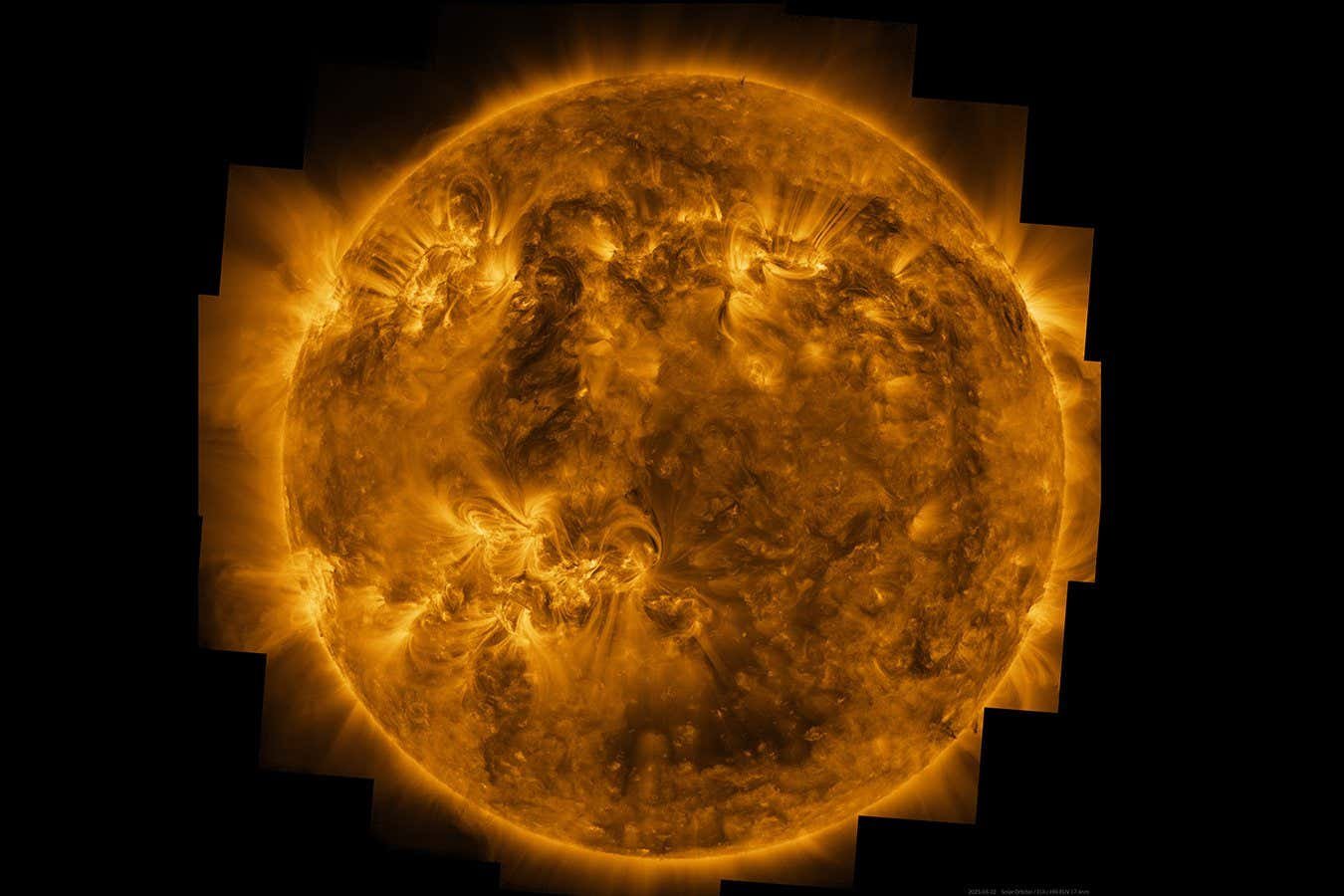
The sun’s upper atmosphere, or corona, in ultraviolet light
ESA & NASA/Solar Orbiter/EUI Team
These fiery images are the clearest views we have ever had of the sun, taken by the Solar Orbiter spacecraft.
Solar Orbiter, a joint mission between the European Space Agency (ESA) and NASA, is the most advanced instrument to orbit the sun and has been sending back information to Earth since it arrived there in 2020.
These images were captured in March 2023, when Solar Orbiter was less than 74 million kilometres from the sun. The picture above was taken using ultraviolet light, revealing the sun’s outer atmosphere, or corona, in extreme detail and showing the roiling, 1 million °C plasma blasting out along the sun’s magnetic field lines. The bright light from the sun’s surface normally hides the corona, so the corona can normally only been seen if you block out visible light, which happens during an eclipse, or just look using ultraviolet light, say.
To create this full image of the sun’s corona, many smaller zoomed-in pictures had to be stitched together, resulting in this full mosaic consisting of 8000 pixels. In the future, we will get two high-resolution pictures of the sun like this from the Solar Orbiter each year, according to ESA.

The sun in visible light taken by the Polarimetric and Helioseismic Imager on the Solar Orbiter spacecraft
ESA & NASA/Solar Orbiter/PHI Team
This second image is what the surface, or photosphere, of the sun looks like when viewed by the Solar Orbiter in visible light, the same light we can see with our eyes. This layer of the sun has a temperature of between about 4500 and 6000°C. The dark regions here are sunspots, which are cooler than the surrounding areas and emit less light.

A map of the sun’s magnetic field as measured by the Polarimetric and Helioseismic Imager on the Solar Orbiter spacecraft
ESA & NASA/Solar Orbiter/PHI Team
When viewed using the spacecraft’s magnetic instruments, the sun’s magnetic field can be seen to be concentrated around the sunspot regions (see image above). The field directs charged particles away from these regions, cooling them down and giving them their dark appearance.

A velocity map, or tachogram, showing the speed and direction of movement of material at the sun’s visible surface
ESA & NASA/Solar Orbiter/PHI Team
The Solar Orbiter can also track the speed and direction of the plasma moving at the sun’s surface. In this velocity map (above), called a tachogram, blue represents movement towards the spacecraft and red away from it, showing that the plasma mostly turns with the spin of the sun, but diverges around the sunspot regions.
This collection of images will help scientists understand the behaviour of the sun’s corona and photosphere. The Solar Orbiter will also image the sun’s poles, on the top and bottom of the star, which we haven’t seen before. We don’t currently understand the solar poles well and researchers expect these areas to look markedly different from the other regions of the sun.
Topics:

Felecia Phillips Ollie DD (h.c.) is the inspiring leader and founder of The Equality Network LLC (TEN). With a background in coaching, travel, and a career in news, Felecia brings a unique perspective to promoting diversity and inclusion. Holding a Bachelor’s Degree in English/Communications, she is passionate about creating a more inclusive future. From graduating from Mississippi Valley State University to leading initiatives like the Washington State Department of Ecology’s Equal Employment Opportunity Program, Felecia is dedicated to making a positive impact. Join her journey on our blog as she shares insights and leads the charge for equity through The Equality Network.




